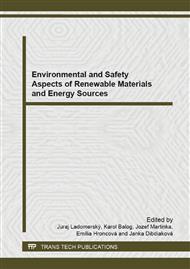p.94
p.103
p.109
p.114
p.118
p.126
p.131
p.141
p.149
Treatment Sewage Sludge with the Addition of Charcoal
Abstract:
Wastewater treatment is an important human invention that facilitates the support and development of human civilization. The actual biological wastewater treatment, like most other technologies, is not waste-free technology, because produces a significant amount of waste, sewage sludge. It can therefore be concluded that technological processes for wastewater treatment in one hand bring the desired effect, namely treated wastewater, and on the other hand, unwanted product - sewage sludge. Simply we can say that the pollution, which was covered in water, the treatment of wastewater transferred to the birth of sewage sludge, in waste production [1].
Info:
Periodical:
Pages:
118-125
Citation:
Online since:
August 2014
Authors:
Keywords:
Price:
Сopyright:
© 2014 Trans Tech Publications Ltd. All Rights Reserved
Share:
Citation:


